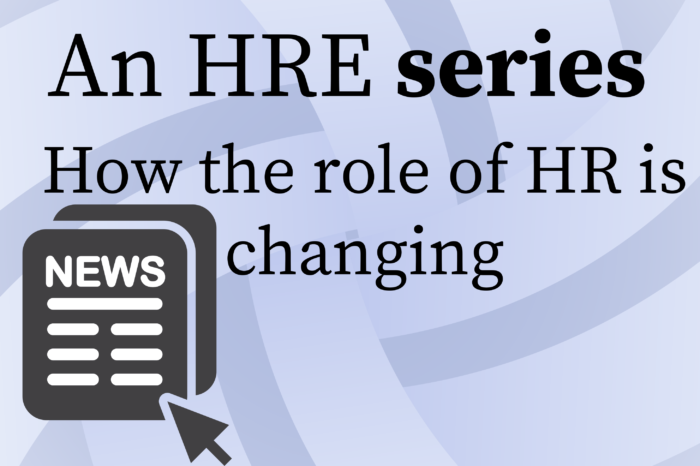It happens when you are presenting a new idea or suggesting an organizational change. It happens when you are advocating for new DEI initiatives or a professional development opportunity. It might be something significant or inconsequential, but it always sounds like this:
- “I am concerned that we have not considered A, B and C.”
- “I worry that this solution will not achieve our objectives.”
- “This will never work.”
Seventy percent of change initiatives fail. This happens for a variety of reasons. Sometimes HR professionals fail to communicate a vision or are not able to gain commitment for the solution to common employee relations issues like bullying or harassment change initiatives. Employees might not see that there was a problem to begin with, so they push back against anything new. There are a number of great strategies to assist in gaining buy-in for changes, but more often than not, resistance comes from an emotional disconnect and a lack of acceptance of something that is being proposed.
Regardless of how relevant the concern is, for HR leaders it can be extremely frustrating when a change is proposed and the team brings up endless “concerns” that prevent business from moving forward. While you want to entertain productive discussion, these types of arguments can feel like stubborn resistance.
When HR leaders hear words like “concern,” “worry,” or “apprehensive,” it’s usually masking fear. Too often, HR professionals find themselves debating or arguing their point of view as opposed to pausing and understanding the fear expressed in “concerns.” We often entertain dialogue that keeps us stuck in defensive positions, instead of getting to the heart of the issue: fear.
Related: Read more on HR Leadership from HRE.
For HR leaders and employees alike, fear takes on various shapes and sizes. It might be an employee who shows concern for a solution when they are afraid of losing control of an aspect of the process that is important to them. They might fear losing their job if a new technology is adopted or the loss of professional power that an organizational change will demand.
Each of us experiences fear differently based on our specific circumstances, our values and our personalities, and the way things that are important to us are threatened. When HR leaders recognize and allow team members to process their fears, it can make all the difference between a project or idea that finds success and one that stays stuck and fails.
The following three tips can help you move past fear and earn buy-in for new DEI, culture changes or general human resource improvement ideas:
Have the right conversation.
When HR leaders push an issue or solution without pausing to ask the right questions, team members never have the chance to examine what is creating their personal resistance. Fear is grounded in threat, so when we hear about concerns, it’s important to get to the root of the issue. When we immediately jump to justifying our solution or defending the change we are proposing, we lose sight of the core issue.
Asking the right questions and having the right conversation supports open, honest discussion. Some questions to get you started might include:
What are your main concerns? This question allows the surface issues to rise. Employees might share that the solution doesn’t address the problem or perhaps they think their co-workers won’t be on board. Asking this question allows for a “data dump” and a way to process all the items on the surface. Too often, HR leaders stop here and move into solution mode, addressing and offering counterpoints for the issues and concerns raised. However, if leaders pause and ask the next question, they can arrive at a deeper understanding.
If we were to implement this solution, what would be your biggest fears associated with it? This discussion might require HR leaders to probe a bit, but it keeps the discussion forward-focused. Generally, team members will begin by sharing the fears other people might have. Being vulnerable and sharing our own worries and apprehensions can be difficult. Keep digging and ask them to share what their personal fears are.
Plan for various scenarios.
Fear thrives in uncertainty. While it may be tempting to give up on the new solution/change or to move forward despite the concerns, it can be helpful to team members to explore different options first. Resist the urge to avoid the discussion but keep the option of status quo or “do nothing” off the table. Instead, move the discussion to outline various scenarios.
 HR professionals are often highly involved in employee engagement and culture change efforts. They are responsible in many ways to shift results and they can be concerned that leaders are not demonstrating accountability for the changes. In these cases, planning for different scenarios is especially important.
HR professionals are often highly involved in employee engagement and culture change efforts. They are responsible in many ways to shift results and they can be concerned that leaders are not demonstrating accountability for the changes. In these cases, planning for different scenarios is especially important.
Help the team think through the consequences and the action that will be taken if their worst fear comes true. Think about the likelihood of those consequences. As humans, we have a tendency to think our worst-case scenario is the most likely, but once we explore it a little deeper, we come to a new understanding.
Normalize fear.
Fear takes a great deal of energy from people. In our efforts to build trust and create psychological safety, we must also begin to help our teams recognize when fear exists and realize that it is a normal and natural emotion we feel when circumstances are uncertain and we have limited control.
Acknowledging concerns by recognizing the underlying fear allows change to move forward quickly and successfully. The less we focus on our blanket “concerns” and the more we address root causes of fear instead, the more successful our change initiatives will be.
Related: How S&P Global used a people-first mindset to reprioritize



